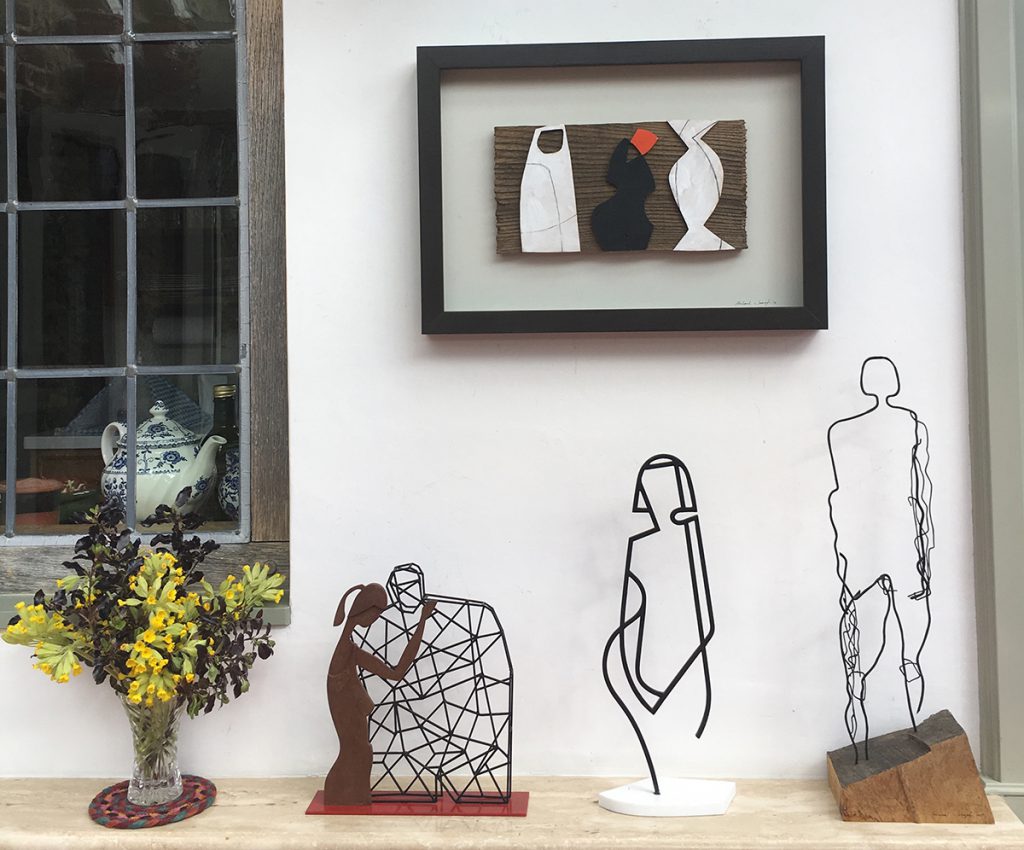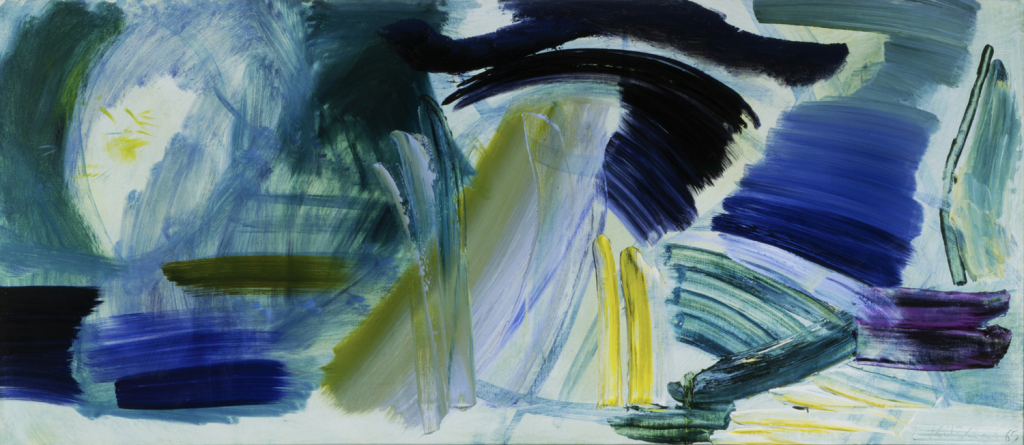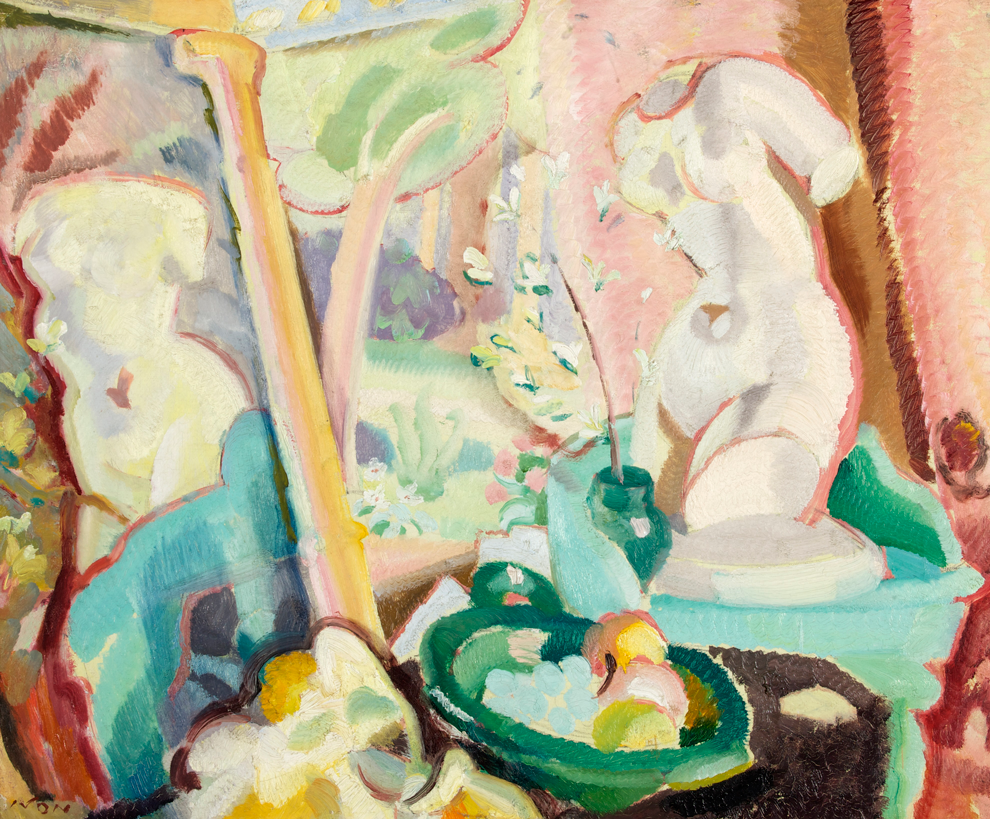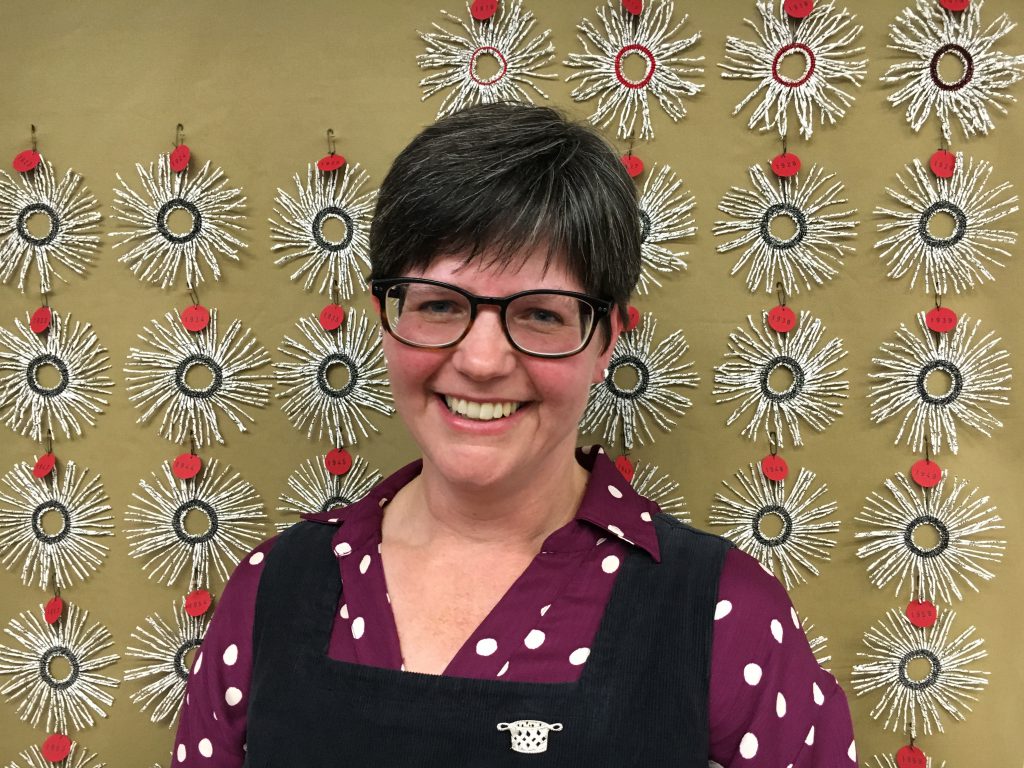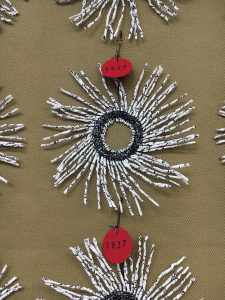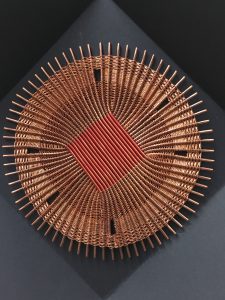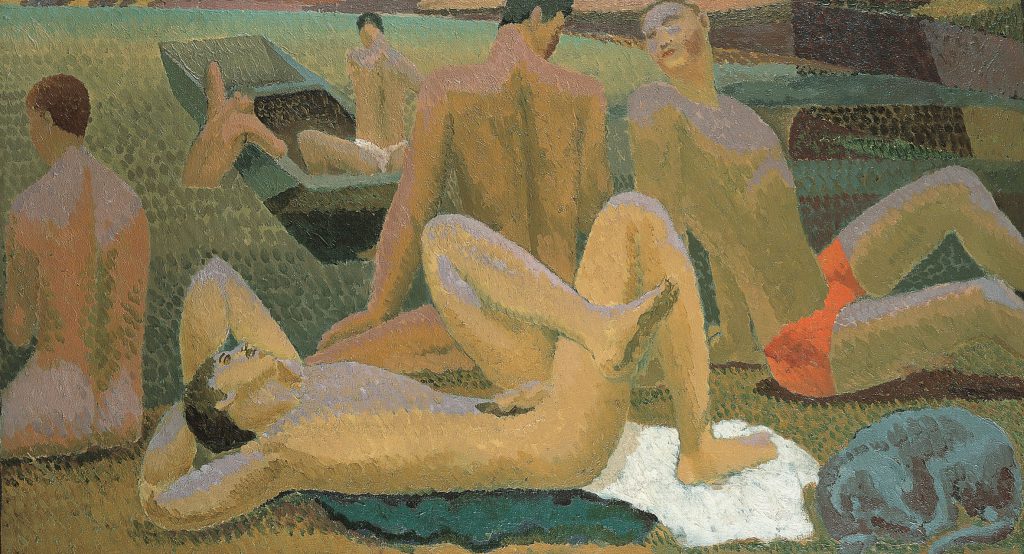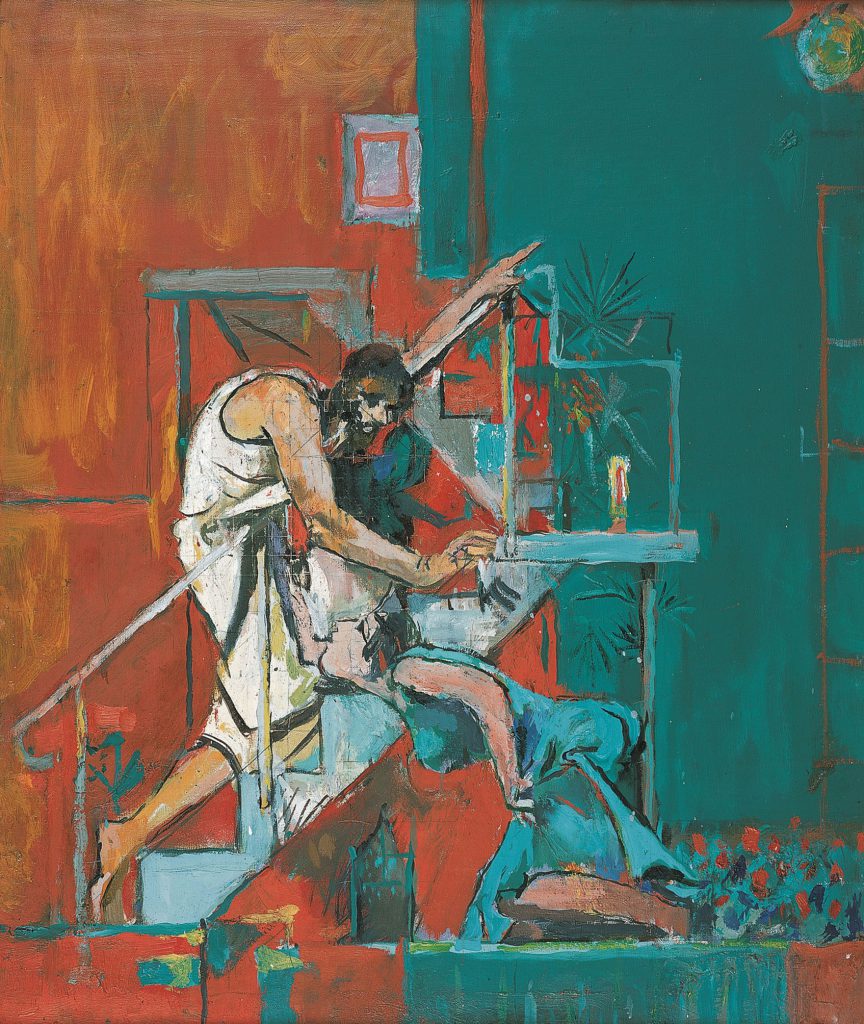
The South Downs have for centuries been shaped by farming. Today the ancient chalk grasslands are once again returning to the steep downland slopes. In the valleys and open fields mixed farming ensures that the fertility of the soil is improved and maintained by the under planting of cereal crops with rich clovers and grass grazed by sheep and cattle. Some of the most balanced and sustainable farming practice in the country is to be found between the South Downs and Horsham.
The oil painting titled ‘Chanctonbury Ring, Sussex’ by the Sussex artist Frank Wooton. OBE (1911-1998) depicts a rural idyll with farmstead and grazing cattle beneath the Sussex Downs. It remains one of my favourite paintings to be sold at Toovey’s in recent years and realised £2400. The tone and palette lend this familiar scene a wonderful luminance. It is this quality of landscape which speaks into the very identity of our nation.
Frank Wootton studied at The Eastbourne College of Art under Eric Ravilious and Arthur Reeves-Fowkes. Whilst his landscapes and equestrian scenes are celebrated Wootton is perhaps most famous for his aeronautical paintings. Wootton would serve as a war artist to the RAF and even before this appointment he was painting the Battle of Britain at Biggin Hill.
In the late 19th and 20th centuries many of Britain’s leading artists were inspired to leave London, our towns and cities for the country. For some it was to escape the effects of the industrial revolution and for others the wars.
And here’s the thing, that sense of the rural idyll remains alive in popular culture and the public’s imagination. In contrast those living in our increasingly urbanised society have become more and more removed from the reality of country life and farming which is why the work of the West Grinstead & District Ploughing Match & Agricultural Society has never been more important. It brings the farming community together, promoting best practice and educating the public. The overwhelming majority of the farmers here in Sussex work constantly to achieve a balance between maintaining the fertility of the land, producing food in a sustainable way for the nation with close attention to the preservation of nature.
Our farmer’s continue to steward the landscapes which have inspired artists and musicians over the centuries and never more so than in Sussex in the 20th century. In our hearts and minds the countryside with its generous communities connected with the seasons and the abundance of the land have provided hope against the back drop and grind of urbanisation and industrialization.
I think this is why landscape paintings continue to speak to us so strongly and remain in such demand.
Toovey’s Director and specialist, Nicholas Toovey, is preparing his next curated auction of fine art which will be held on 4th December 2019 and entries are still being invited. Nicholas is always delighted to share his passion for paintings with others and offer advice. He can be contacted on 01903 891955.
By Rupert Toovey, a senior director of Toovey’s, the leading fine art auction house in West Sussex, based on the A24 at Washington. Originally published in the West Sussex Gazette.
